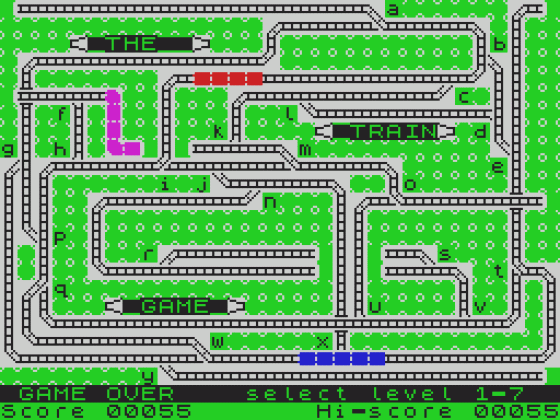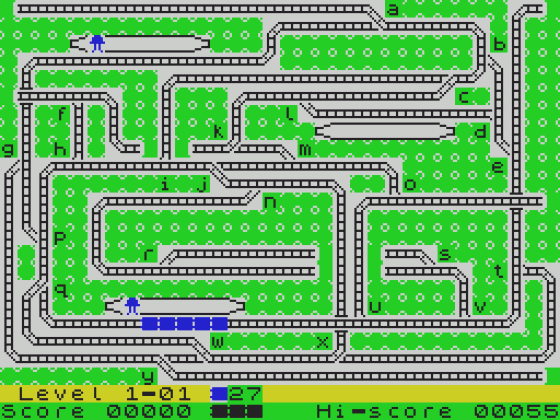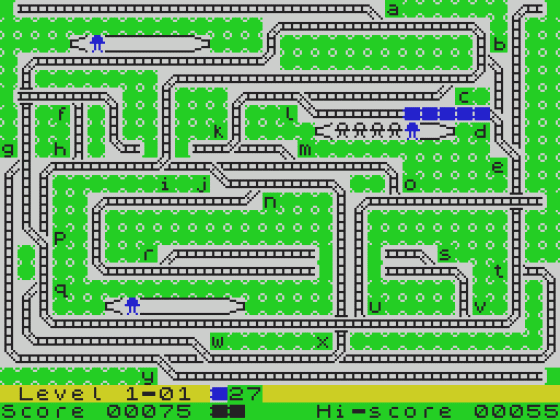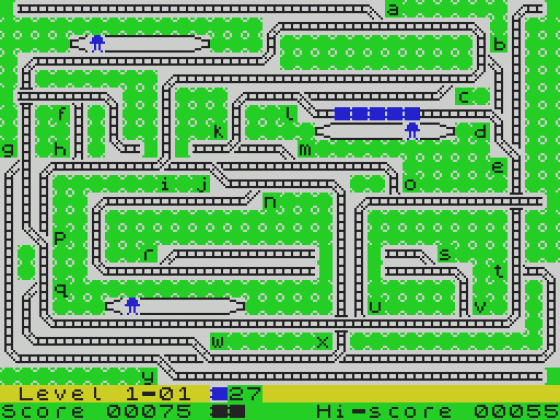
ZX Computing
 1st October 1984
1st October 1984
Categories: Review: Software
Author: John Bourne
Publisher: Microsphere
Machine: Spectrum 16K
Published in ZX Computing #15
The Train Game
Last Christmas the computer was the thing for dads to buy their children so they could use it as an excuse to get something they wanted for themselves. Twenty years ago, fathers bought train sets for their sons for the same reason. Now, courtesy of Microsphere, you can have the best of both worlds.
No longer need one sit with one's legs around the neck as a miniature train weaves its way through make-believe tunnels under the lounge chair. Your entire layout appears on the TV screen and, indeed, is far more ambitious than the average model railway enthusiast could afford.
This excellent simulation gives one the possible choice of two distinctly different layouts. There are 25 switchable points on track A and 19 on track B. Each layout boasts three stations and many other novel additions appear as the game progresses.

There are seven levels, so the instructions inform us, but I have yet to reach them all by progression, although one can designate which level at the start of the game. The first six levels have five sub-levels and level seven offers nine sub-levels.
Now, if you thin the running of a railway is simple then forget it, for it takes considerable skill and pracctice even to control the running of a single train. One has to avoid wrongly set points and de-railments due to changing points with the train on them. The disasters are graphically represented on the screen.
There is also the problem of passengers. You have to pick up 25 passengers before progressing to the next sub-level and each passenger scores points providing they are picked up in time. If, however, you keep them waiting, they will turn white with anger and score nothing when picked up!

Indeed, if there are angry passengers there when the train arrives then only they are allowed on board and all the others must wait. They may well be white with anger by the time you get to that station again.
There is another problem that could well arise too. You may allow the station to fill up and then you will find yourself in further trouble.
You are allowed three disasters before the railway looks for another General Manager. A high score column keeps a record of your efforts.
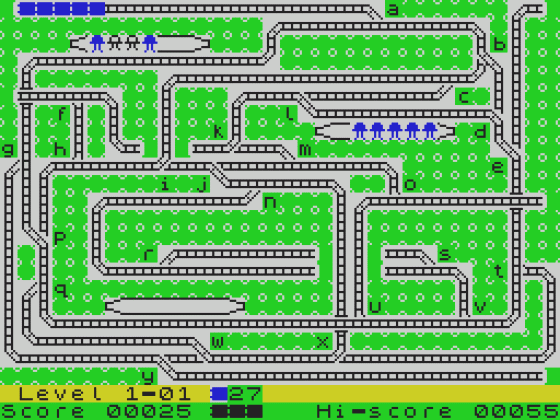
You can stop the whole system while you reflect on what to do next but beware, while nothing is happening your score will begin to decrease. Then there is the odd goods train or express that appears on the system and the only way to get rid of these is to send them from whence they came! Care is needed here for if you inadvertantly direct one of your suburban trains along that line it will disappear - for ever.
Every so often a turntable bonus appears, but whether you consider this is a bonus is a matter for conjecture.
Realistic train noises accompany the screen image but I found them too repetitive to be enjoyable. Fortunately there is a facility for switching them off.
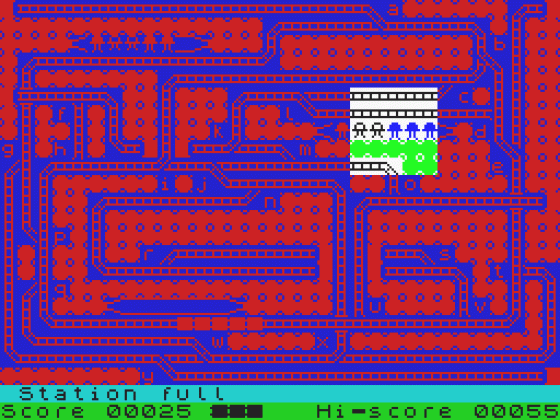
There are many other problems and eventualities built into the program and these are fully explained in the adequate instructions printed on the cassette insert.
All in all, this is an excellent example of what can be done on even the 16K Spectrum and the program is very addictive. It would be interesting to hear of high scores achieved by others.
There are, of course, drawbacks in even the best programs. The letters that designate the points are difficult to see and it would have been very much better if a simple introductory track had been included, with say eight points, to enable the user to get in some practice. I have made copies of both the tracks on a piece of card and lettered the points clearly. This card is left near the computer for reference.
I would thoroughly recommend this game to all Spectrum owners and suggest that, at £5.95, it is very good value for money.
Other Reviews Of The Train Game For The Spectrum 16K
The Train Game (Microsphere)
A review by (Crash)
The Train Game (Microsphere Computer Services)
A review by B.B. (Home Computing Weekly)
The Train Game (Microsphere Computer Services)
A review by (Sinclair User)


